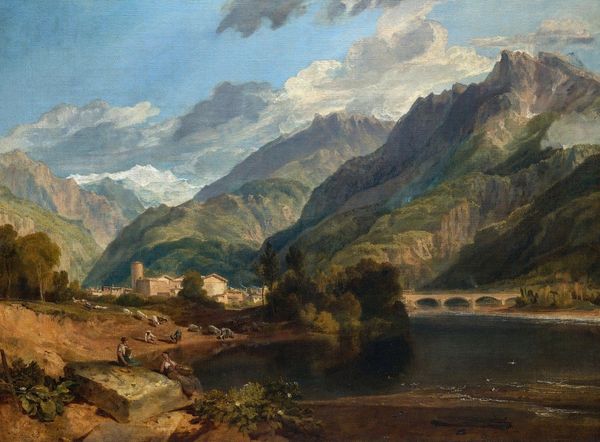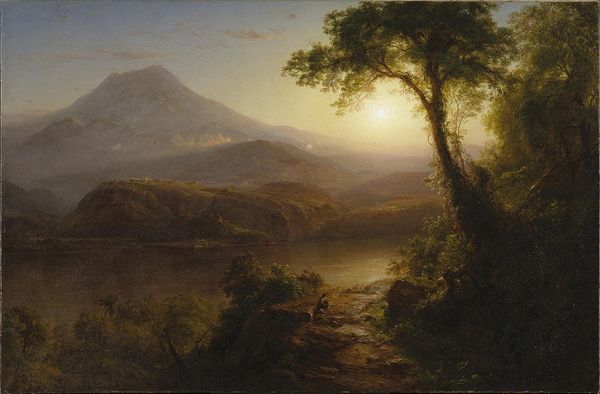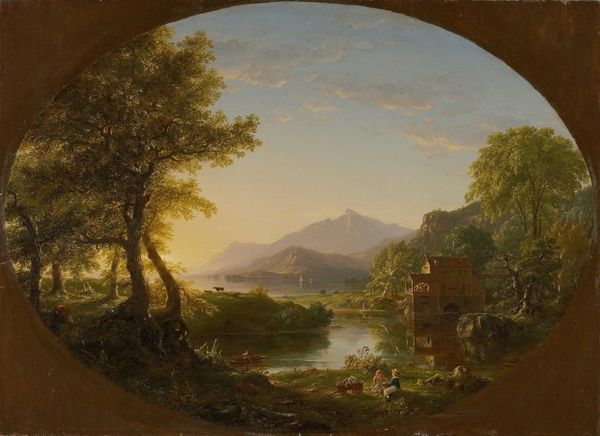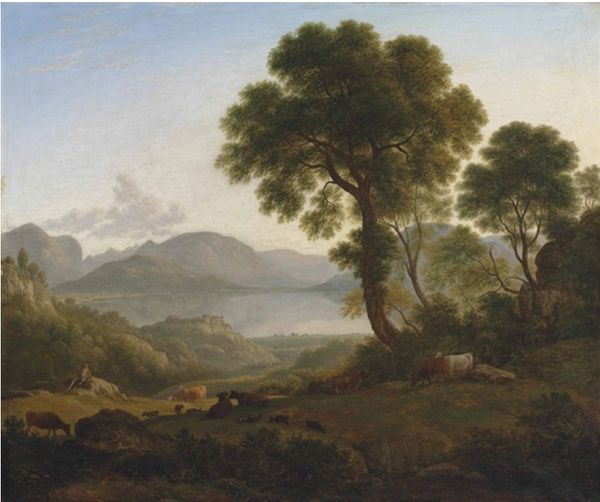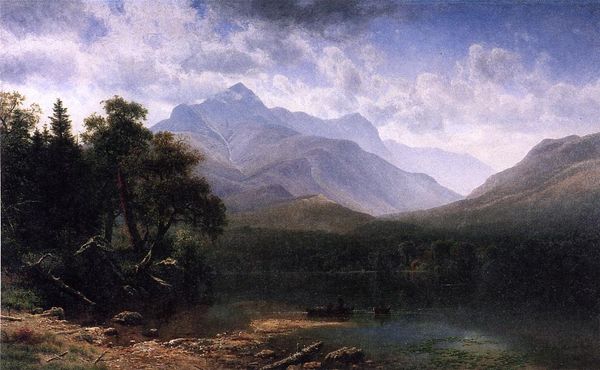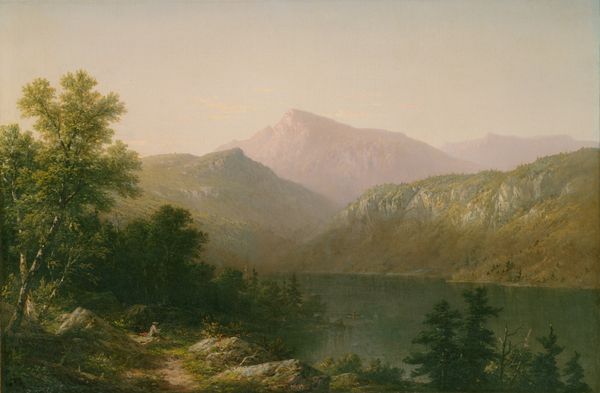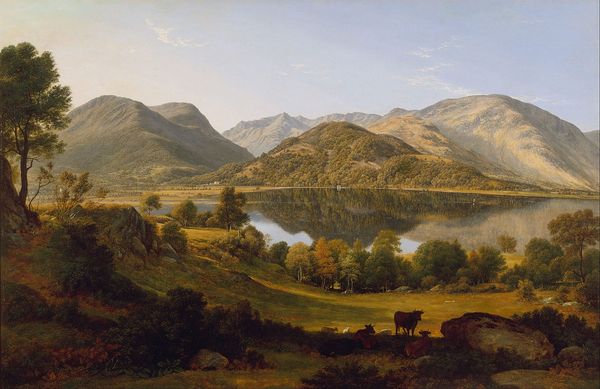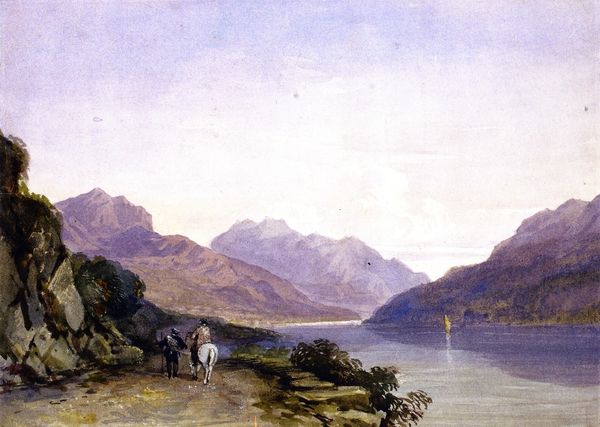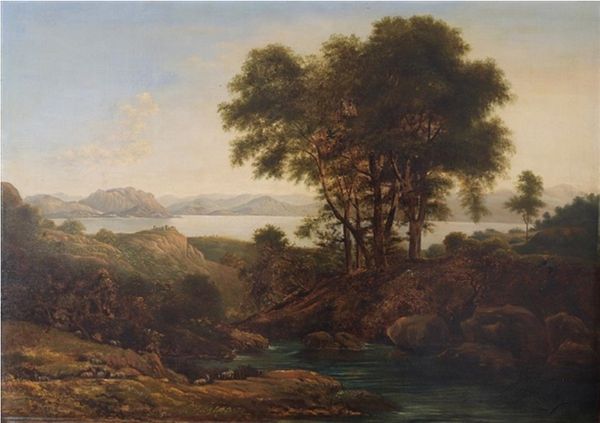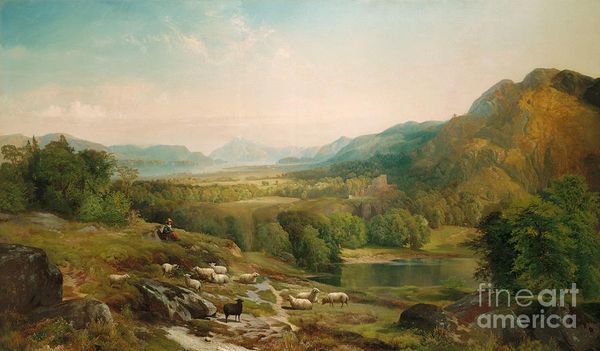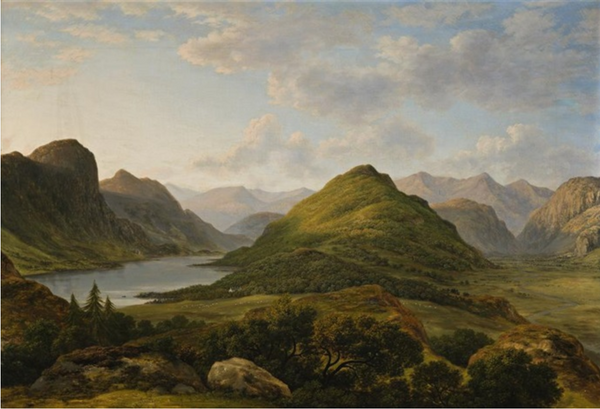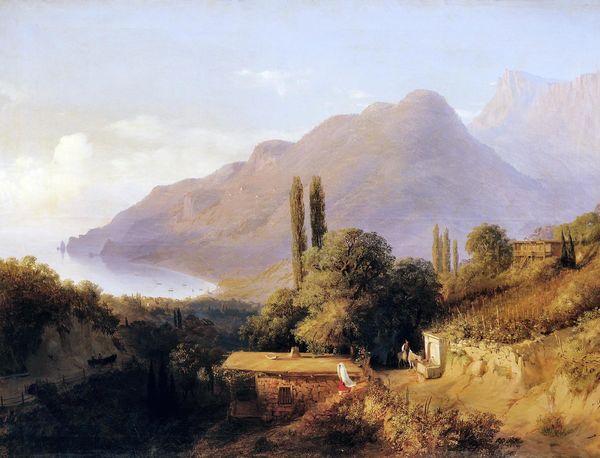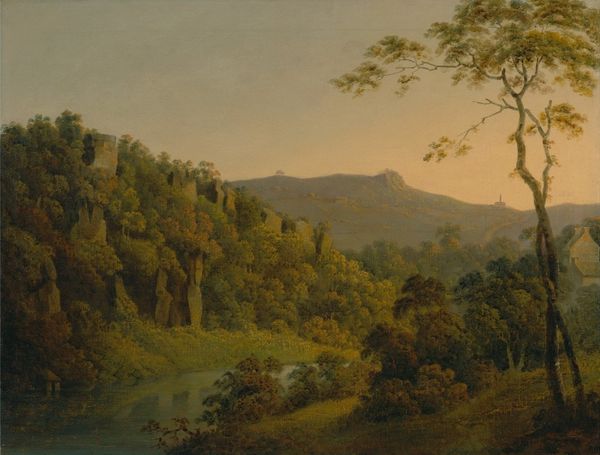
plein-air, oil-paint
#
plein-air
#
oil-paint
#
landscape
#
oil painting
#
romanticism
#
watercolor
Copyright: Public domain
Curator: This is Thomas Moran's "Lake Como." Although we don't have a precise date, the style places it firmly within his romantic period. Editor: It’s striking. The misty, diffused light gives it a dreamy, almost ethereal quality. The cool tones evoke a sense of peace, perhaps even a touch of melancholy. Curator: Absolutely. Consider Moran’s background: he initially trained as a wood engraver for his family’s business before pursuing painting. This engraving experience cultivated his close observation and skill in rendering fine details that carried over into his oil paintings, such as what we can see in his landscapes. He came to this region in search of ideal, picturesque views. Editor: Notice how he structures the composition? The large tree and architectural ruin on the left are visually balanced by the distant mountains on the right. The lake acts as a reflecting pool, creating symmetry. He's carefully directing our gaze. Curator: And consider the "plein-air" approach, aligning his practices with both Impressionist and Barbizon painters: It was all about direct engagement with the environment, trying to understand the place’s geology, climate, and vegetation. The figure on horseback reinforces the accessibility of the place through manual labor, implying the landscape’s direct value as being “of use”. Editor: But let's look at the color. He employs a limited palette—mainly blues, greens, and browns. However, see the delicate gradations in the sky? The way he captures the play of light on the water? It’s masterful. I love how that contrasts with the density of texture in the architectural ruin foregrounded to the left. Curator: I would simply emphasize further that “Lake Como” is not a wholly faithful transcription, of the topography but instead embodies the nineteenth century’s commodified gaze for tourism and leisure. I think in many respects the canvas is the final “product” created by a material and human supply chain. Editor: Ultimately, Moran uses formal tools, tone, contrast, composition to capture and transmit this vision to the viewer, something he picked up working and seeing it in watercolor. He lets us step inside that captured moment and see with him. Curator: Indeed. Studying this, one appreciates art's social processes. Editor: I agree. Viewing art like this reveals visual wonders.
Comments
osimbruno almost 2 years ago
⋮
Greetings I recently came across your stunning artwork on artstation and I wanted to reach out to express my sincere admiration for your talent and creativity. The pieces you have created truly captivate me. I am writing to inquire whether your artwork is available for sale. If so, I would be greatly interested in learning more about its availability, pricing, and any other relevant details. Please let me know if there is an opportunity for me to acquire this exceptional piece for my personal collection. I look forward to hearing from you Thanks
Join the conversation
Join millions of artists and users on Artera today and experience the ultimate creative platform.
